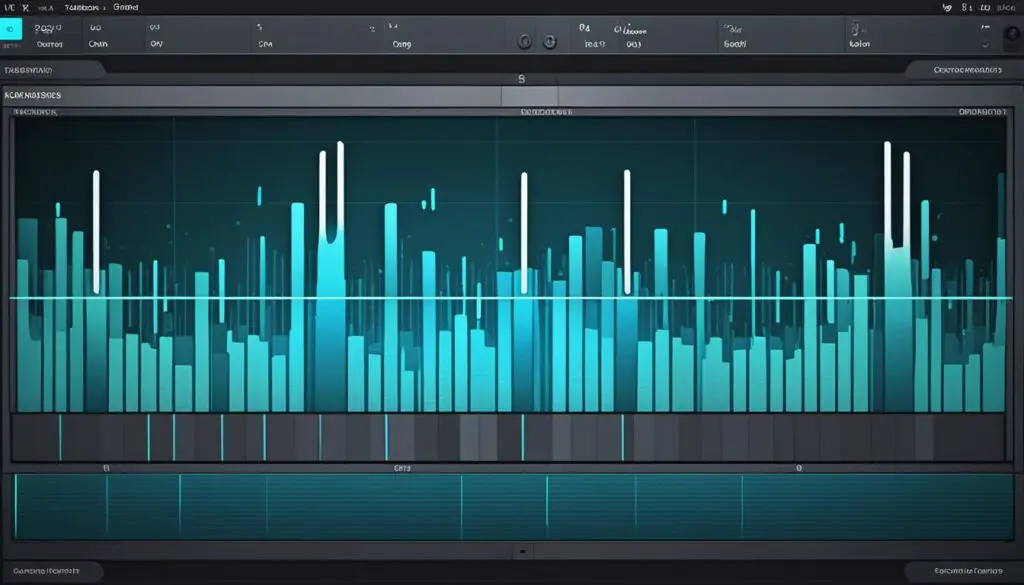How do you avoid clashing frequencies in Dual Vocal Mashups?
Creating captivating dual vocal mashups is tricky. It’s all about balancing the frequencies to avoid clashing sounds. When two voices are mixed together, their frequencies can clash, making the sound harsh or muddy. It’s important to separate the frequencies for each voice to get a smooth blend.
This article will cover how to spot frequency clashes, the role of EQ, and advanced techniques for blending voices. Whether you’re experienced or new to remixing, these tips will help you make your vocal mashups sound professional and impressive.
Understanding Frequency Clashing in Vocal Mashups
When you mix two vocals together, frequency clashing can happen. This means the frequencies of the two voices fight for the same space, making the mix sound unclear. To fix this, use EQ to make each vocal have its own space in the mix. This way, they blend smoothly together.
Common Signs of Frequency Clashing
Frequency clashing shows up in different ways, based on the conflicting frequencies. Here are some signs you might see:
- Muddiness or boxiness in the mix, from low-mid frequencies clashing.
- A thin or hollow sound, when mid-range frequencies don’t stand out.
- A harsh or brittle quality, from high frequencies clashing.
The Importance of Carving Out Separate Frequency Spaces
To get a clear vocal blend, use EQ to give each vocal its own space. This stops them from covering each other up. By doing this, you let each vocal’s unique sound come through. This makes your mashup sound professional and clear.
| Frequency Range | Effect on Sound |
|---|---|
| 50 Hz | Adds fullness to bass instruments like kick drum, toms, and bass. |
| 100 Hz | Gives low-frequency instruments a ‘hard’ sound. |
| 200 Hz | Managing muddiness at this range is crucial for live sound venues. |
| 3 – 600 Hz | Cuts in this range increase punch for kick drums and reduce boxiness. |
| 400 Hz | Boosting can add clarity to bass lines. |
| 700 – 900 Hz | Boosting can bring out the bass line without cluttering up the low end. |
| 1 – 4 kHz | Utilizing this range can enhance the string sound of the bass guitar. |
| 5 kHz | Boosting can add extra presence to vocals. |
| 6 – 8 kHz | De-esser targeting this range helps reduce sibilance. |
| 10 kHz and above | These frequencies can add air and high-end ‘sheen’ to instruments. |
Knowing how different frequencies affect sound helps audio engineers use EQ to separate vocals in a mashup. This ensures a clear and balanced mix.

Dual Vocal Mashup Techniques to Prevent Frequency Clashes
Working with dual vocal mashups means you need to use EQ techniques to avoid frequency clashes. Instead of boosting certain frequencies, it’s better to cut them out. This makes each vocal sound clear and natural.
Using EQ Cuts Instead of Boosts
By cutting frequencies on one vocal, you make it stand out. This way, it blends well with the other vocal without sounding too much. This method helps create a clear mix where both vocals work well together.
Employing Narrow EQ Curves
Using narrow EQ curves gives you detailed control over specific frequencies. This is key for dual vocal mashups. It lets you fix frequency clashes without changing the vocals’ tone.
EQ cuts and narrow curves help shape each vocal’s sound. They make sure each vocal has its own space in the mix. This is crucial for a smooth-sounding mashup without any harsh clashes.

Mastering EQ Techniques for Smoother Vocal Blending
To get a smooth blend between two vocals in a mashup, you need to know EQ techniques well. You must learn to spot and fix issues like muddiness, thinness, boxiness, and harshness. By using EQ to shape each vocal’s sound, engineers can make a mix that sounds great together.
It’s important to focus on making precise cuts with EQ rather than boosting too much. Too much boosting can cause unwanted sounds and make frequencies clash. Engineers should aim to create clear spaces for each vocal, so they blend well together.
For finding problem spots, a good monitoring setup and tools like frequency analyzers are key. These help pinpoint which frequencies need work. This ensures the vocals blend well together.
Using linear phase EQ in mastering is also crucial. It can use more CPU and cause delay, but it keeps the vocals in phase. This is important for a clear blend. Linear phase EQ lets engineers make precise changes without harming the mix.
Techniques like M/S EQ help control the low end of vocals, getting rid of boominess. By using high-pass filters on the stereo sides, engineers can manage low-end sounds. This makes the vocals sound clearer and more focused.
Mastering EQ for blending vocals in a mashup is all about balance. It involves finding problem frequencies, making precise EQ cuts, and using advanced methods. The aim is to create a mix that highlights the best of both vocals.
Advanced EQ Strategies for Vocal Harmonization
For complex vocal mashups, audio engineers use advanced EQ techniques. They swap frequencies and bass to make the vocals blend well. This creates a captivating sound. EQ blending in the midrange is key for tracks focused on vocals, making sure the vocals work together smoothly.
Frequency Swapping and Bass Swapping
Frequency swapping blends the high, mid, and low of each vocal. This makes the harmonies more interesting. Bass swapping changes who leads in the low end, adding depth to the sound.
For this, engineers need to know about vocal harmonization, vocal layering, and EQ techniques. By adjusting the frequencies, they make the vocals sound together and engaging.
EQ Blending for Vocal-Heavy Tracks
On tracks with lots of vocals, the midrange is crucial. Engineers must balance these carefully to prevent clashes. This process, EQ blending, keeps the lead vocal clear and focused.
Using audio processing like EQ cuts and boosts, engineers can make the vocals sound smooth and unified. These advanced EQ strategies turn vocal mashups into exciting sounds.
Conclusion
Learning how to avoid frequency clashes in vocal mashups is key for making great audio remixes. It’s important to know the signs of frequency clashes and how to use EQ to separate the vocals. Techniques like frequency swapping and EQ blending help create a balanced vocal blend.
Understanding EQ techniques and having a good ear for sound balance is crucial in audio processing and music production. With these skills, audio engineers can make vocal blending that makes the mix sound better. The right tools and techniques open up endless possibilities for creative vocal mashups.
The music industry is always changing, and being able to blend vocals well is very important. By keeping up with audio engineering best practices and improving their skills, producers can lead the way. They can make dual vocal mashups that grab the audience and set new standards in music production.







